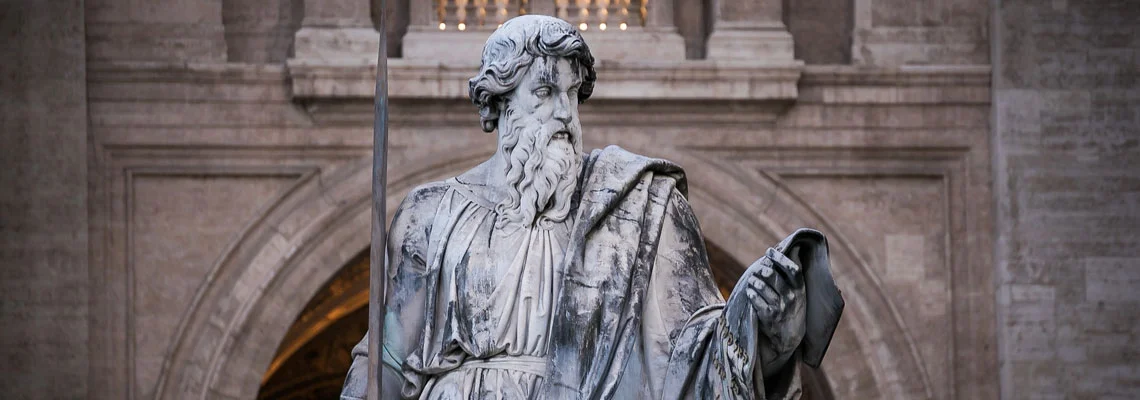There are many real tragedies of the artistic temperament, tragedies of vanity or violence or fear. But the great tragedy of the artistic temperament is that it cannot produce any art.
A Problem of Governance? Responding to the Crisis of Abuses of Power in the Church
The Art Critic and Loving Those Who Hate Us
Monastic Experience Weekend, May 31: St Mary's Benedictine Monastery, Petersham
Transposing the Gospel
The Theology of Legoland - Why Is It So Popular?
Christians take note. Legoland have worked something out here. These children are transported in their imaginations and they love it. The fact that the images are made out of plastic bricks, does not put them off, rather it seems to attract them even more. We may hold our noses at the McDisney aesthetic, but we should look and learn. and consider why, despite that, it is so popular.
How is an Artist Like a Missionary?
Painting of St Joseph
Rite by Rote! Why learning of the texts of the liturgy will transform worship, improve singing, improve art, and renew the culture
You can’t be a doctor by studying pre-Med. That’s all most Great Books programs give us - supporting texts. They ignore the story of Christianity that forms us to contibute to and conserve the cultute - salvation history as described in the Bible, and lived out through our participation in the sacraments. The more intimately we know these texts, the easier it is to worship well and to be Christian in everyday life.
The Source of Artistic Greatness
Science Studies the Pattern of the Past. Beauty Is the Pattern of the Future. Science Needs Help!
Natural science is a good thing, but we must understand its limitations. As a method of inquiry is blind to the possibilities of human creativity, inspiration, and the way in which each of us uses our naturally endowed freedom. This is why it fails spectacularly and repeatedly time after time to predict the future for humanity.
Understanding Hatred
A Fire in a Cathedral? Why So Sad?
A New Icon of Lazarus for Contemplation of Christ's Victory Over Death By Death
As an offering for Holy Week, I present this unusual icon by a contemporary Serbian iconographer called Nikola Sarić.
I reflected on Lazarus in particular immediately prior to and on Palm Sunday, and through this, I know that the bodily resurrection is offered to me, too, in a form that is full and permanent, through God’s infinite mercy and power. This recollection helps me to retain hope in the days that follow, as we live through the Passion in Holy Week, and in the understanding that the events that followed are precisely those that open up this path for us.
Here are icons of the crucifixion and the Risen Christ in Majesty.
We can see that the artist has an unusual style. Some Orthodox have objected that they are unsuitable for the liturgy, since they depart a little too far from the traditional style. For example, the rotation of the heads by 90 degrees in order to show the figures looking to heaven has been criticized, on the stylistic grounds that icons portray the redeemed Saint, and even though they might illustrate an historic event, heaven is always present, shining through them. My response to this is that narrative icons, such as festal icons, are always a balance between an account of historic events - portrayed through content - and the eternal, portrayed through style and content. Therefore, while this is an unusual feature, to my eye, Sarić’s works do maintain an iconographically appropriate balance between the eternal and the temporal.
To finish, here is an icon of the new Coptic martyrs of Libya for us to contemplate as we go through Holy Week. The work is particularly skilled here; the artist has presented a scene that is familiar to us through a video, but in a way that it is both fully in his iconographic style, and yet also recognizable as this contemporary event.
For those who are interested, we discuss all of these issus that modern sacred artists face in the courses of the Master of Sacred Arts program at www.Pontifex.University. This is a theoretical program which is intended as a formation for artists in any creative discipline, patrons of the arts, and those who wish to contribute to the New Evangelization.
The Return of the King; A Parable of Trust
Why Portraying God as a Gray-Haired Man Offers Hope to Radical Feminists
So much of today’s gender wars and identity politics, I feel, emanate from a poor grasp of the Christian understanding of both human and divine love. It is more common, through the popularization of the Theology of the Body, to focus on nuptial love as a type for God's love, and rightly so. But we should be careful not to neglect what the types of paternal and maternal love tell us about God's love too.
Total Recall, Aubrey Beardsley, and the Challenge of Our Past
Contemporary Traditionalism! Building a Carmelite Monastery In Fairfield, Pennsylvania
Discalced Carmelite life is centered around interior, silent prayer along with a definite strong note of the eremetical. Both these characteristics distinguish it from the monastic forms, such as Benedictines, who center their spiritually on the Divine Office. (Eremerical means, that which pertains to the life of those who go into solitary or isolated places to seek religious goals—hence hermits.)
Authenticity and the Misuse of Our Gifts
Popular Culture Can Be Christian! Popular Culture Must Be Christian
This is the point: contemporary culture can direct people to God without arousing prejudice if it participates in the themes and the forms of the narrative of faith and of liturgical art, music and architecture. Compare The Trees, by Canadian rock band Rush with the conversation of the vine, fig tree and briars in Judges 15!


























